One of the first challenges for new sewers is learning to sew a straight line. Even some sewers with more experience sometimes struggle with this simple sewing task. It is important to be able to sew straight because crooked or wavy seams can affect the look of your finished project. If you are sewing clothing, it may change the fit and drape of the garment. And, of course, if you are a quilter, you definitely need to sew straight, consistent seams so the patches fit together to get the pattern and block size you want. The main reason (not the only one) for sewing seams that are NOT straight is the needle. Nothing wrong with the needle, but if you are watching the needle as you sew, it is almost impossible to get a perfectly straight line of stitches. You need something stationary to use as a guide as you stitch. There are multiple options, depending on the technique you are sewing and the project you are making. Keep reading for six ways to solve the straight sewing issue.
Stitch Plate Markings
Using the markings on the stitch plate is a simple way to straighten out your sewing. Simply place your fabric edge on the engraved line that suits your project. For instance, if you are sewing a garment, use the 5/8” line. Keep your eyes on the fabric edge, making sure it is aligned with the engraved mark on the plate as you stitch.
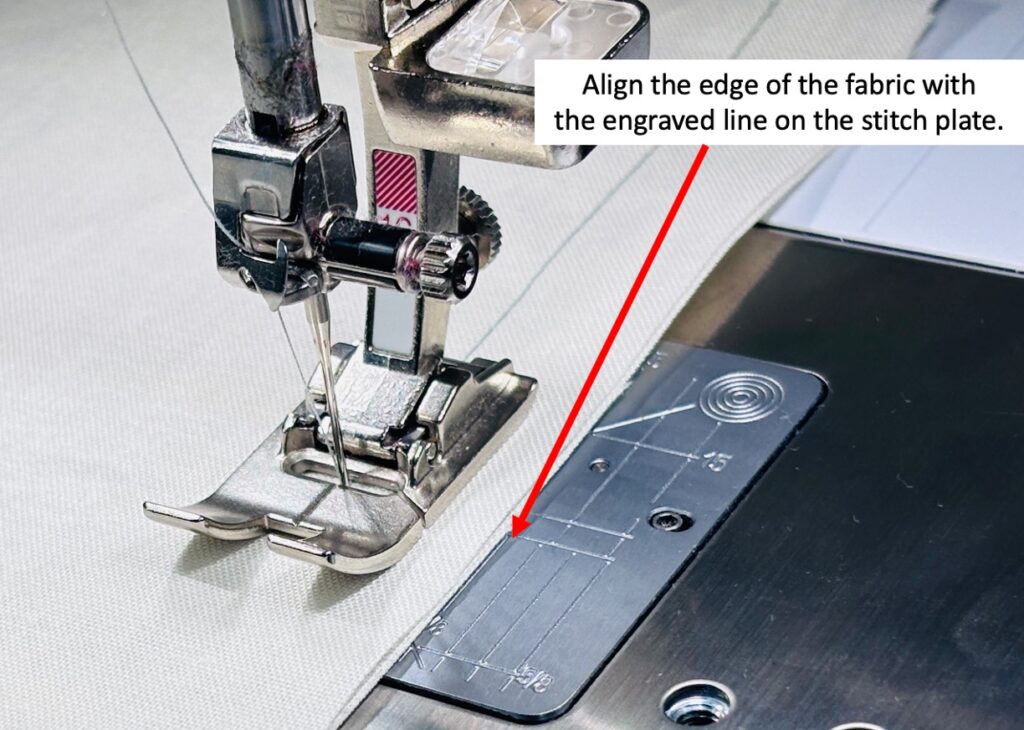
Presser Foot Spacing
Using the side of the presser foot as a guide is simple and can be used as a spacing guide. For consistent spacing between parallel lines of stitches, sew the first line and then sew the next one, with the edge of the foot placed next to the first line of stitching.
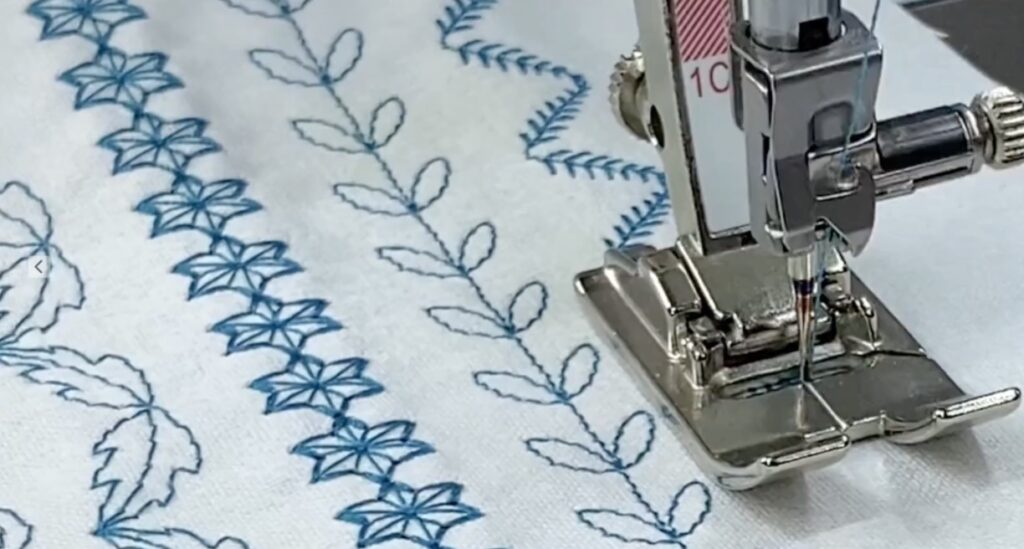
Aligning the Toe
Another technique is to align the fabric edge with the inside toe of the foot. This works really well with Open Embroidery Foot 20/20C/20D and is great when you want to stitch decorative stitches close together with little or no space between them. Align the inside of the toe of the foot with the edge of the previously sewn stitch, sew a new one.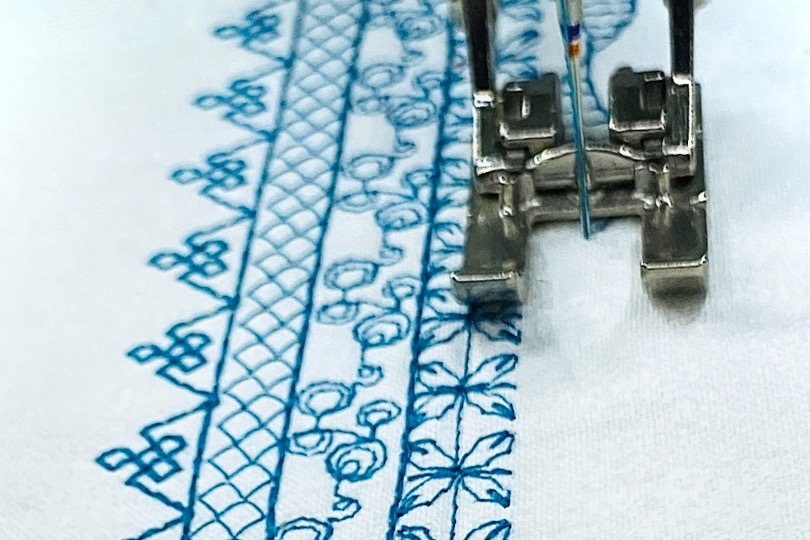
Center Guide Foot
Edgestitch Foot #10/10C/10D has a center guide that you can align with the edge of the fabric or a previously stitched line. Adjust the needle to sew where you want and watch the guide, keeping it aligned as you stitch. This foot is great for edgestitching, topstitching, making tucks, and following marked lines. If you leave the needle in the center position, It will follow the guide, which makes it a good choice for stitching in the ditch.
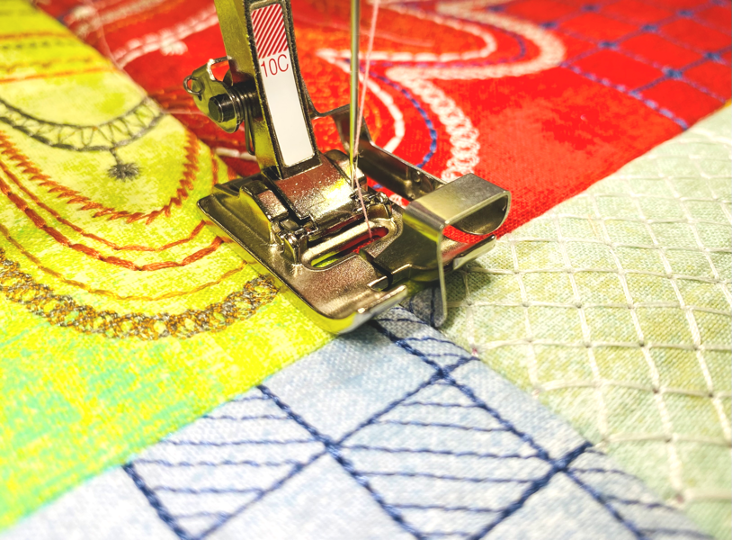
Center Mark
Look for a presser foot that has a notch or mark that indicates the center of the foot. I love the Clear Foot #34/34C/34D. This is an all-purpose presser foot with a clear sole that has bright red line at the center of the foot. Mark your fabric with the lines you want to stitch and then position the red mark on top of the drawn line. Stitch the line, keeping the red mark and the drawn line aligned as you sew.
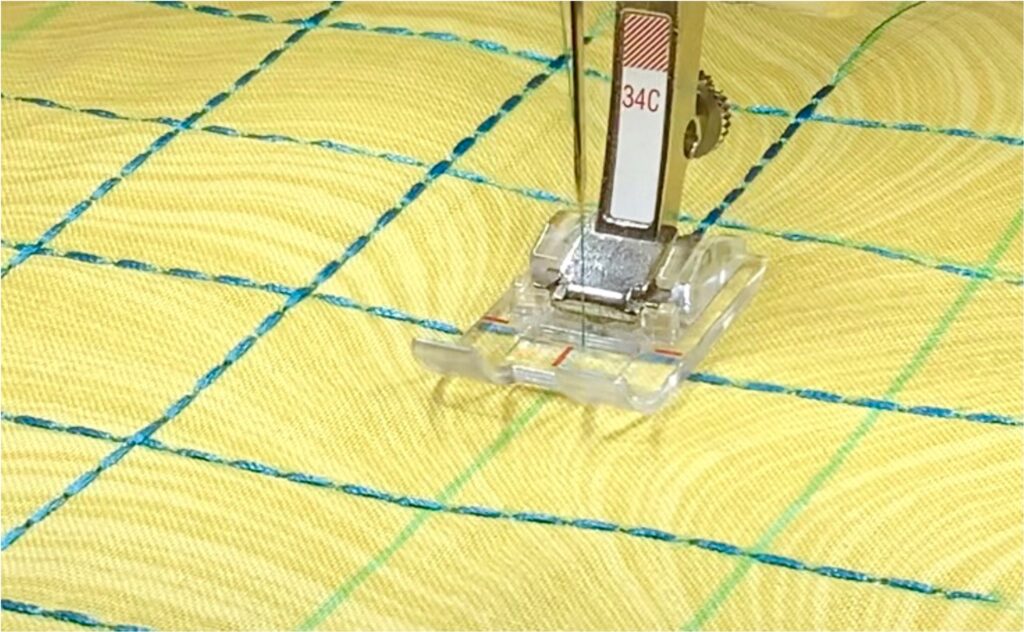
Attached Guide
Here’s an age-old method of sewing perfectly-stitched parallel lines. This little seam guide (also called a quilting bar) is included with many sewing machines and has been for decades. The BERNINA guide attaches to the back of the presser foot. Measure the desired distance from the needle to the guide before tightening the screw at the back of the foot. This is a great way to even spacing of parallel lines of stitches or a hem with an even depth. The seam guide shown below is an optional accessory that has a ruler, making it easy to adjust the guide with a specific distance from the needle.
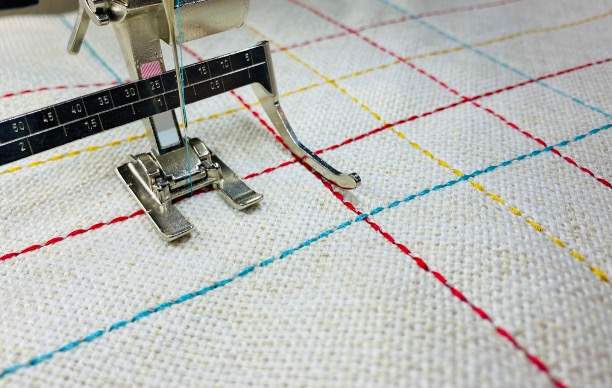
One Last Tip
One more thing that can make it easier to stitch straight lines of decorative and practical stitches is to watch your speed. Sewing at half speed (or less) reduces the movement of the fabric, making it easier to control it and lets you sew straighter and more precisely.
As always,

